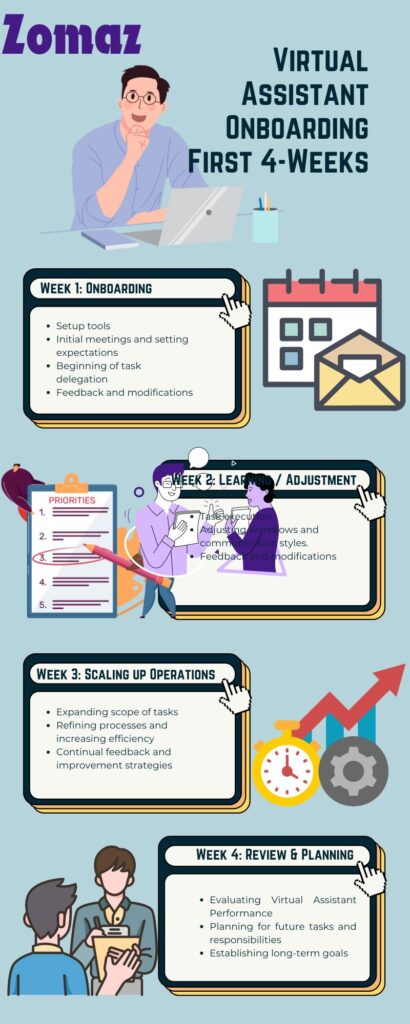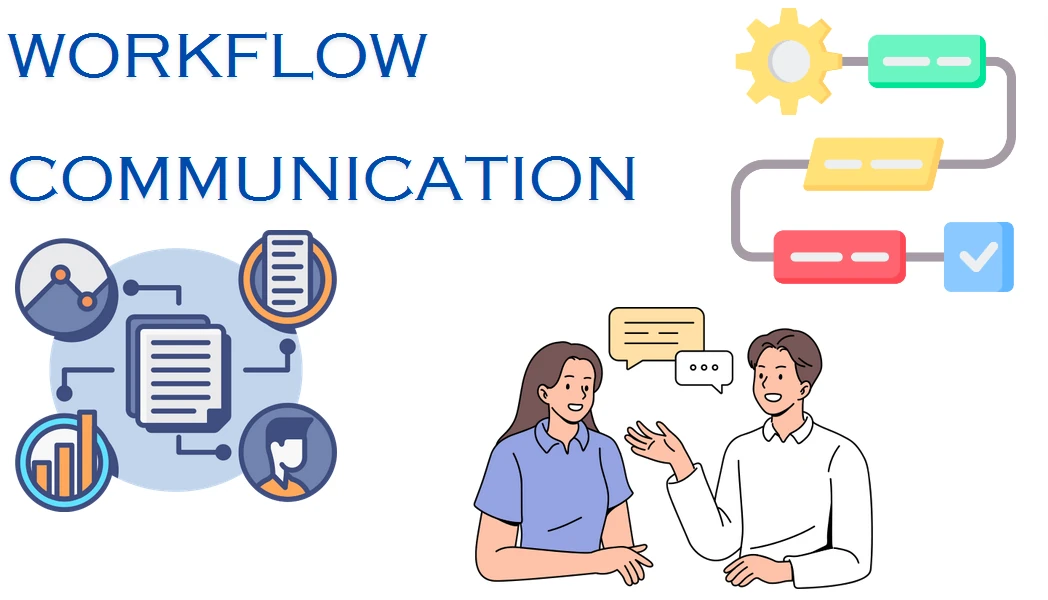The concept of virtual assistants has become increasingly prominent in both personal and professional realms. The initial month of incorporating a virtual assistant into your daily operations is crucial, as it sets the foundation for future interactions and efficiencies.
In this post, I will explore what you can expect during the first month of working with a virtual assistant, emphasizing the importance of setting realistic expectations and laying the groundwork for a productive relationship.
- See Also
- Observing Learning Curves in Task Execution
- Adjusting Workflows and Communication Styles
- Feedback and Modifications
- Expanding the Scope of Tasks
- Refining Processes and Increasing Efficiency
- Continual Feedback and Improvement Strategies
- Evaluating the Virtual Assistant’s Performance
- Planning for Future Tasks and Responsibilities
- Establishing Long-Term Goals
Virtual assistants can perform a wide array of tasks, from scheduling appointments to handling customer inquiries or even managing personal errands. However, like any new tool or team member, there is a learning and adaptation period.
During the first month, you will not only learn about the capabilities and limitations of your virtual assistant, but you will also teach the assistant how to best serve your specific needs.

Down Above Infographic in PDF Format
Week 1: Onboarding and Integration
The first week with a virtual assistant is primarily focused on onboarding and integration. This phase is critical as it establishes the operational base and communication protocols that will dictate the effectiveness of your virtual assistant. Here are the key activities you should expect and engage in during the first week:
Setting Up Tools and Software
Your virtual assistant will likely require access to certain tools and software that you use daily. This could include calendar apps, email accounts, project management software, and specialized tools relevant to your industry. Ensuring that your assistant has all the necessary accesses and is trained to use these tools is essential. This might involve setting up accounts, configuring software for shared access, and ensuring data security protocols are followed.
Initial Meetings and Setting Expectations
It’s important to have initial meetings with your virtual assistant. These meetings can be used to set clear expectations regarding tasks, working hours, priorities, and communication preferences. Discussing your objectives and how you measure success will help your assistant understand what is expected and how they can best contribute to your goals.
Beginning of Task Delegation
Start by delegating simple tasks to gauge the capability of your assistant and to build trust. These tasks could include scheduling meetings, data entry, or managing emails. As your assistant completes these tasks, you can assess their proficiency and reliability, which is crucial for gradually increasing their responsibilities.

During this first week, you should also be prepared to invest time in answering questions and providing clarifications. This upfront investment will enhance your assistant’s ability to perform tasks autonomously and with greater accuracy in the future.
Feedback and Modifications
The end of the first week is a good time to review the tasks performed by your virtual assistant. Provide constructive feedback on what has been done well and what could be improved. This feedback is vital for refining processes and ensuring that your assistant learns from their initial experiences.
By the end of the first week, you should have a fairly good idea of how well your virtual assistant understands your requirements and how effectively they can handle assigned tasks. This sets the stage for further learning and adjustment in the subsequent weeks.
Week 2: Learning and Adjustment
The second week of using a virtual assistant focuses on observing how the assistant handles tasks, learning from the initial experiences, and making necessary adjustments. This period is crucial for both you and your assistant to fine-tune processes and communication styles for better efficiency.
Observing Learning Curves in Task Execution
During this week, you will notice how quickly your virtual assistant adapts to feedback and adjusts their approach to tasks. It’s important to monitor their performance, particularly how they manage more complex tasks compared to the initial simple ones. You may find that certain instructions need to be more detailed, or that some tasks require specific context that you hadn’t considered initially.
Adjusting Workflows and Communication Styles
Based on the performance in the first week, you might need to adjust workflows to better suit the capabilities of your assistant. This could involve redefining task lists, adjusting deadlines, or even changing communication methods (e.g., switching from email updates to real-time messaging for quicker feedback).

It’s also a time to solidify communication preferences. If certain times of day work better for updates or if specific types of communication are more effective, establish these patterns now. Consistency in communication will greatly enhance the productivity of your virtual assistant.
Feedback and Modifications
Continual feedback is essential during this learning phase. Regular check-ins where you provide clear and actionable feedback will help your assistant understand your expectations more deeply and perform tasks more effectively. It’s also a good opportunity to ask your assistant for their input on how the workflow might be improved from their perspective, fostering a collaborative environment.
By the end of the second week, you should have a more streamlined process and a better understanding of how to communicate effectively with your virtual assistant. This sets the stage for expanding their responsibilities and increasing overall efficiency in the weeks to come.
Week 3: Scaling Up Operations
As you enter the third week with your virtual assistant, the focus shifts towards scaling up operations. This involves expanding the scope of tasks assigned to your assistant and refining the processes to enhance productivity and efficiency.
Expanding the Scope of Tasks
By now, your virtual assistant should have a solid understanding of basic tasks and how you like them to be completed. This is the perfect time to start introducing more complex or higher-priority tasks. Examples might include managing more significant portions of projects, engaging with clients or customers, or handling sensitive information. As you delegate these tasks, ensure that your assistant is comfortable with the new responsibilities and has the necessary resources and information to succeed.
Refining Processes and Increasing Efficiency
With the basics well in hand, you can look for ways to make the processes more efficient. This could involve automating routine tasks with the help of digital tools, optimizing communication channels, or restructuring tasks to better align with your virtual assistant’s strengths and schedule.
Efficiency also involves minimizing redundant communications and maximizing the use of your assistant’s skills. For instance, if your assistant excels at research, you might start delegating more research-focused tasks that can benefit other areas of your operations.
Continual Feedback and Improvement Strategies

Ongoing improvement is key to maintaining an effective working relationship with your virtual assistant. Continue providing regular feedback, and encourage your assistant to do the same. Discuss what is working well and what can be improved. This might include adjusting work hours, changing communication tactics, or even reassessing task priorities.
Feedback should be constructive and aimed at mutual growth. It’s also helpful to set short-term goals for the coming weeks to keep both you and your virtual assistant focused on continuous improvement and achievement.
By the end of the third week, your virtual assistant should be more integrated into your workflow, contributing significantly to day-to-day operations and potentially taking on roles that free up even more of your time.
Week 4: Review and Long-Term Planning
In the fourth week of working with your virtual assistant, it’s time to conduct a comprehensive review of their performance and plan for the long-term future. This stage is crucial for cementing the relationship and ensuring the sustainability of the working arrangement.
Evaluating the Virtual Assistant’s Performance
Begin by reviewing the tasks completed over the past month, assessing both the quality of the work and the timeliness of task completion. Evaluate how well the virtual assistant has adapted to your business environment and met the initial expectations set during the onboarding process. Consider factors like communication effectiveness, problem-solving abilities, and overall reliability.
It’s beneficial to use this evaluation to make informed decisions about the continuation and expansion of their responsibilities. Determine if there are new areas where the virtual assistant could be beneficial or if there are efficiencies that can be improved upon.
Planning for Future Tasks and Responsibilities
Based on the performance evaluation, plan out future tasks and projects for your virtual assistant. Consider assigning responsibilities that align with your long-term business goals. Planning might include setting up quarterly objectives, discussing potential challenges, and outlining expectations for the coming months.
Establishing Long-Term Goals
Establish clear long-term goals that include developing your virtual assistant’s skills and integrating them more deeply into your core business processes. Consider their professional development as part of your strategy, which could include training in specific tools, software, or skills that would add value to your operations.
The end of the first month should also be a time to formalize the workflow and communication rhythms you’ve developed. This ensures that both you and your virtual assistant have a clear understanding of the expectations and can work efficiently moving forward.
Conclusion
Reflecting on the first month with your virtual assistant, it’s clear that the journey involves significant adjustment and learning for both parties. By setting realistic expectations, engaging actively in the onboarding process, and providing continual feedback, you can forge a productive and enduring relationship.
The key is to maintain open communication, adapt to each other’s work styles, and be proactive in addressing challenges.